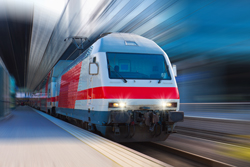Super sensors for a super rail system
As Europe comes together, its rail transport systems are slowly but surely morphing into one super-network. While challenges such as interoperability and technical standards delay the consolidation of the system, progress is being made on many fronts. The EU-funded project 'Catenary Interface Monitoring Coherent sensing technology for electrical railway infrastructure and rolling stock for interoperable cross boundary transportation' (Catiemon) facilitated EU-wide rail cooperation and interoperability. It also helped to make the EU's rail system more cost effective. Catiemon outlined challenges that must be overcome to achieve this formidable objective, developing key performance indicators to monitor regulation and standards in the industry. It worked on a monitoring tool for overhead contact lines (OCLs) to measure vertical contact force and friction force between the wagon's top part and the overhead infrastructure. The project worked on sensor technology that facilitates rail monitoring tools. The challenge lay in ensuring that carbon strips glued to fibre optic sensors can detect how the antennae-like equipment makes contact with the overhead lines at high speed. Such technology can help differentiate between vertical contact hits (from the top) or horizontal contact hits (from the front). It also allows maintenance inspectors to detect deformities in contact and over time. The project studied and tested the technology in real-life conditions, gleaning results that would help improve monitoring of railway transport across Europe, and bring interoperability one step closer. Its work resulted in new types of electromagnetic optical fibre sensors for the railway industry based on a technology known as Fibre Bragg Grating (FBG). These sensors have already been installed on railway lines and can withstand the high voltages of railway systems, as well as the harsh outdoor conditions. This new technology and other novel equipment developed under Catiemon (called interrogators) hold much promise in advancing unity in railway systems, improving railway management and enhancing safety.







